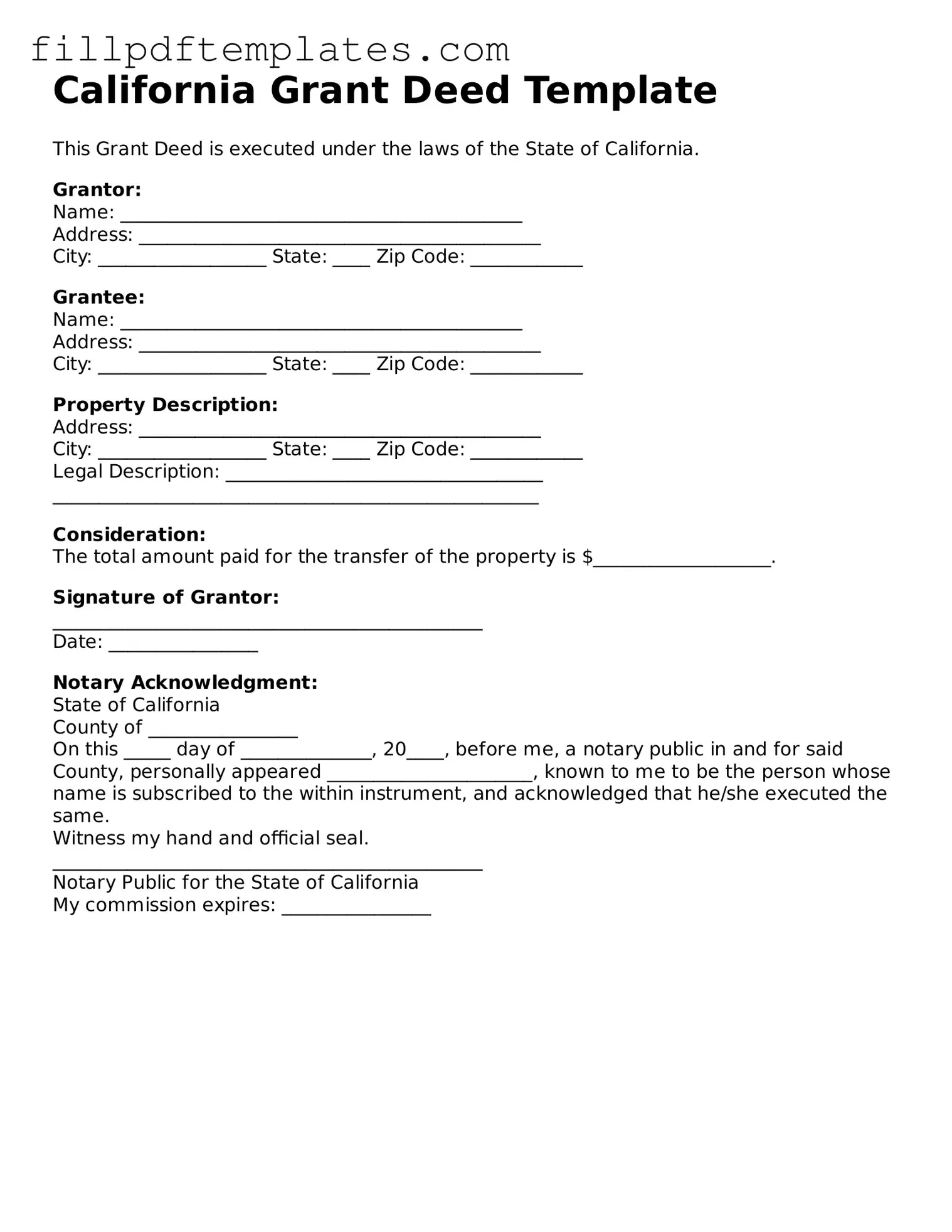California Grant Deed Template
This Grant Deed is executed under the laws of the State of California.
Grantor:
Name: ___________________________________________
Address: ___________________________________________
City: __________________ State: ____ Zip Code: ____________
Grantee:
Name: ___________________________________________
Address: ___________________________________________
City: __________________ State: ____ Zip Code: ____________
Property Description:
Address: ___________________________________________
City: __________________ State: ____ Zip Code: ____________
Legal Description: __________________________________
____________________________________________________
Consideration:
The total amount paid for the transfer of the property is $___________________.
Signature of Grantor:
______________________________________________
Date: ________________
Notary Acknowledgment:
State of California
County of ________________
On this _____ day of ______________, 20____, before me, a notary public in and for said County, personally appeared ______________________, known to me to be the person whose name is subscribed to the within instrument, and acknowledged that he/she executed the same.
Witness my hand and official seal.
______________________________________________
Notary Public for the State of California
My commission expires: ________________
